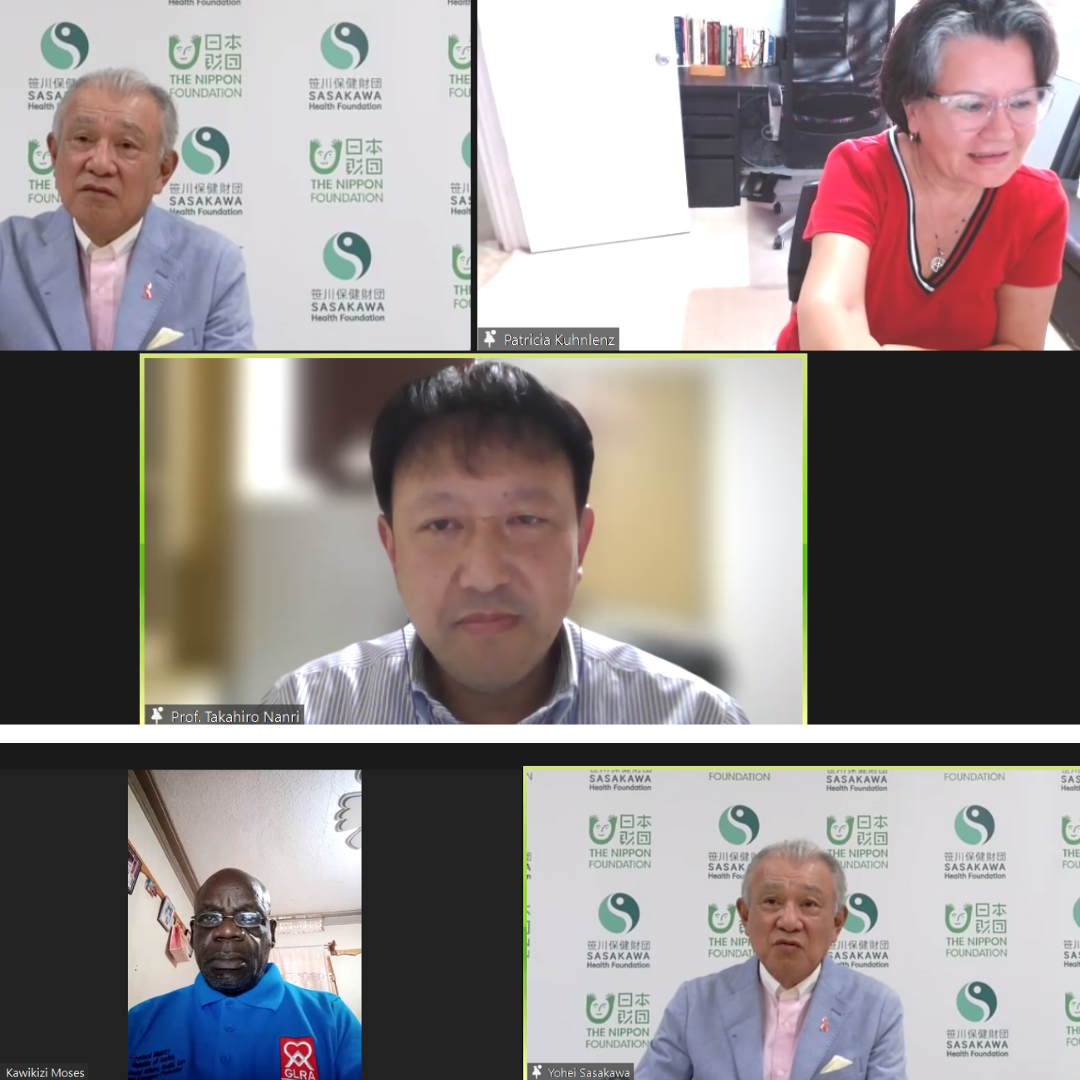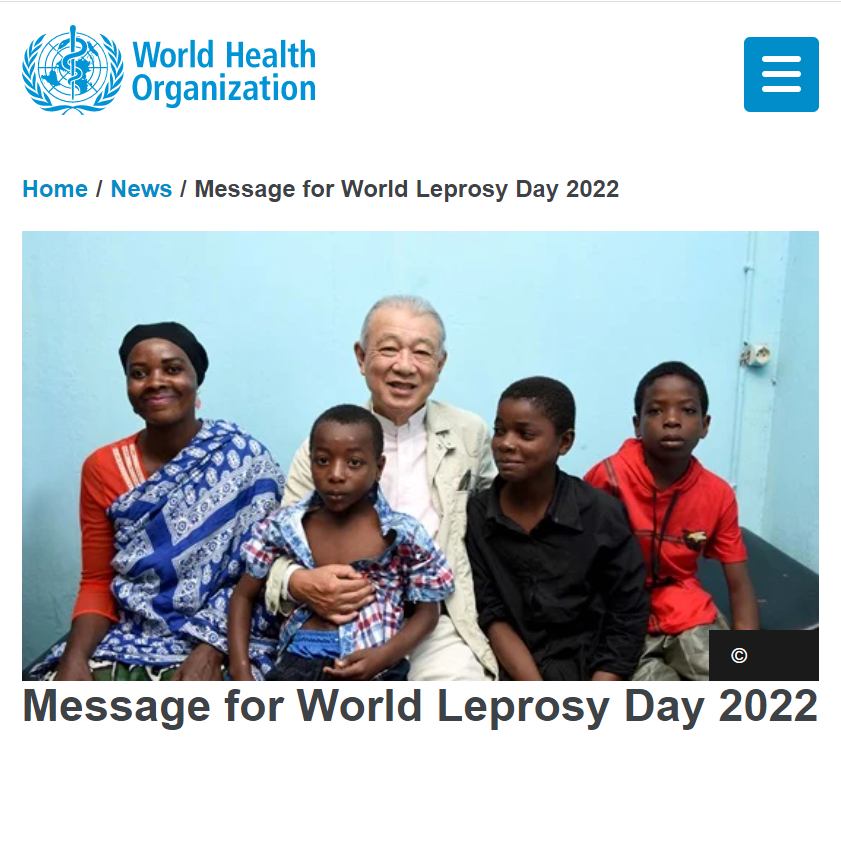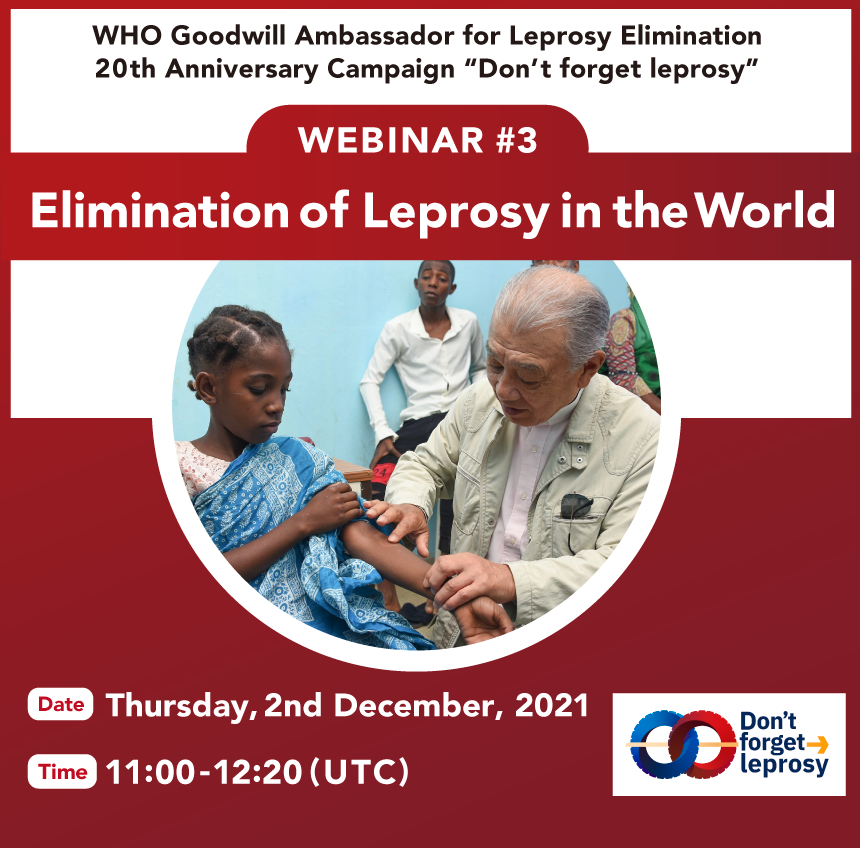The fifth in a series of 6 webinars of “Don’t forget Leprosy” campaign was held on Mar. 25, 2021 on the theme of “Elimination of Leprosy: Initiatives in Asia”.
This is the coverage of Inter Press Service (IPS) on this event. To read the article on the IPS website, click here.
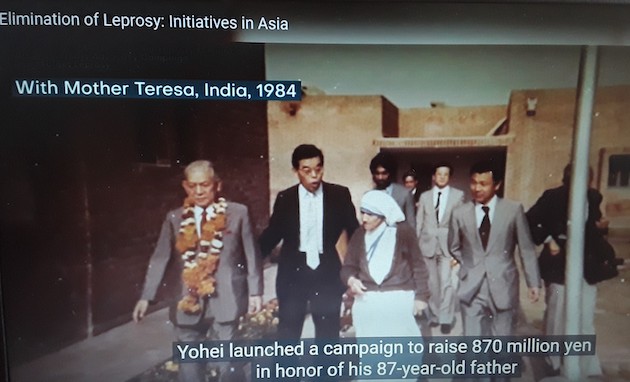
Nairobi, Kenya, Mar 25 2022 (IPS) – On a visit to Indonesia’s Papua Province, WHO Goodwill Ambassador for Leprosy Elimination Yohei Sasakawa had dinner with a man forced from his village and living alone because he was affected by leprosy.
Over the years, Sasakawa saw many other desperate and desolate people infected and affected by leprosy. Marginalized, shunned, stigmatized, feared, and relegated to society’s furthest and hidden corners.
“Until I became ambassador, persons affected by leprosy tended to be on the receiving end of assistance. But I felt this was not the solution because this was contributing to self-stigma. I felt it was important for the public to know that they had been cured of their disease and were active,” Sasakawa, also the Nippon Foundation Chairman, says.
“I wanted to speak out, even though they had suffered from severe discrimination for a long time and were afraid that if they spoke up, they would be targeted afresh.”
Sasakawa spoke of his belief that persons affected by leprosy should take the lead in eliminating prejudice and discrimination and of partnerships with NGOs, academic institutions, and many other efforts to eliminate leprosy.
Sasakawa was speaking in support of the ‘Don’t Forget Leprosy’ campaign webinar series by the Sasakawa Leprosy Initiative under the theme, ‘Elimination of Leprosy: Initiatives in Asia.’
Under the Sasakawa Leprosy Initiative, the WHO Goodwill Ambassador, the Nippon Foundation, and Sasakawa Health Foundation work in coordination to achieve a leprosy-free world.
“The ‘Don’t Forget Leprosy’ campaign is significant. COVID-19 took attention away from other diseases, including leprosy. Leprosy continues to be a challenge. We must stay on the mission to detect, treat and eliminate leprosy,” Tarun Das, chairman of Sasakawa India Leprosy Foundation (S-ILF), told participants.
Sasakawa recounted Asia’s journey towards the long-term vision of zero leprosy, zero infection, disease, zero disability, and zero stigma and discrimination. Sasakawa spoke of the many challenges encountered along the way, the triumphs, and the journey into a leprosy-free world.
Triumphs include availability and provision of effective leprosy treatment and particularly the critical role played by the Nippon Foundation in reducing the number of patients with leprosy by ensuring Multiple Drug Therapy (MDT) treatment was available and free to all persons affected by leprosy.
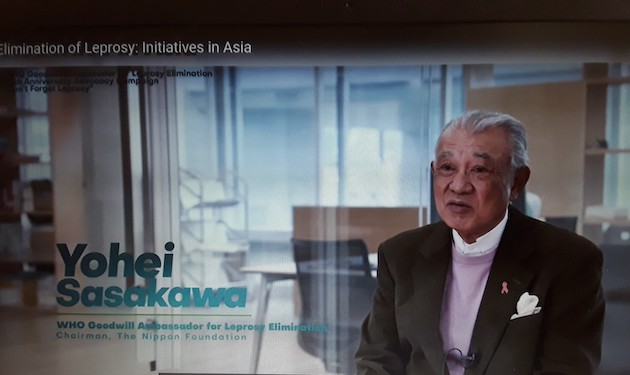
Sasakawa also told participants about the Dalai Lama Sasakawa Scholarship with matching funding from the Nippon Foundation in support of children from families affected by leprosy.
“It has not been an easy journey,” he said, but the answer for Sasakawa to solve these challenges is: “We will not know until we try.”
Dr David Pahan, the country director of Lepra Bangladesh, spoke about leprosy as a neglected tropical disease and is least prioritized by the health system.
He told participants that the leprosy program further faced sudden and significant challenges induced by COVID-19, leaving persons affected by leprosy highly vulnerable.
“In response, we provided advice and emergency assistance to people affected by leprosy or acute disability in households threatened by the COVID-19 outbreak in Bangladesh,” Pahan told participants.
Pahan stressed the need for early treatment to prevent the risk of disability and encouraged collaboration with Civil Society Organizations to help fight stigma and improve leprosy treatment outcomes.
Erei Rimon, the National Leprosy Elimination Program Manager, Ministry of Health and Medical Services, Republic of Kiribati, spoke about the small island nation in the Central Pacific Ocean with an estimated total population of 119,490. Registered leprosy prevalence per a population of 10,000 is 12.9.
Rimon reported ongoing efforts, such as the capacity building of health staff to detect and manage leprosy and follow-up of leprosy treatment defaulters, leading to a notable reduction from 241 defaulters in January 2021 to 162 defaulters in December 2021.
Das lauded ongoing collaborations, saying that Asia deserves special attention, especially South-East Asia, an endemic leprosy region. Asia is one of six WHO regions, where 127,558 new leprosy cases were detected in 2020 across 139 countries, including India, Nepal, and Bangladesh – 8,629 of these were children below 15.
Despite COVID-19 disrupting programme implementation and a reduction in new leprosy case detection by 37 percent in 2020 compared to 2019, Asia and, in particular South-East Asia, reported an estimated 84,818 cases out of an overall 127,558 cases.
Against this backdrop, Das told participants that S-ILF is dedicated to the socio-economic integration of people affected by leprosy to pull them out of demeaning dependence and earn their livelihoods with dignity.
S-ILF’s core business is to promote business opportunities, providing small loans for businesses and offering scholarships for children from leprosy-affected families.
The participants in the webinar heard heart-wrenching testimony.
“My name is Maya Ranaware, treasurer of the Association of Persons Affected by Leprosy. I am a woman affected by leprosy and cured. (I have) faced and (am) facing leprosy-related challenges. I experienced the most painful stigma from family, loved ones, and society,” she told participants.
Ranaware said this was the life of women affected by leprosy, most of them poor, unable to read and write, and without psychosocial or other critical support systems. She called for increased social awareness to change this trajectory so that women affected by leprosy are not forgotten.
Ranaware’s views were echoed by Yuliati, Chair of the South Sulawesi branch of PerMaTa Indonesia, who decried myths and misconceptions around leprosy. Yuliati cautioned that these levels of misinformation derail efforts towards a leprosy-free world.
Dr Takahiro Nanri, the Sasakawa Health Foundation executive director, moderated a question-and-answer session between the Goodwill Ambassador and participants. This provided an opportunity to explore whether it was possible to eliminate leprosy by 2030.
While this was a grand vision, Sasakawa said it helped keep the leprosy elimination movement on track.
Despite his relentless campaign to eliminate leprosy, Sasakawa says: “I still do not think I have done enough.”
For so long, he says, “leprosy was thought of as a divine punishment or hereditary or highly contagious. Until MDT transformed treatment, people had this negative image of leprosy that remained in their DNA. We have to do more to remove it.”
IPS UN Bureau Report






